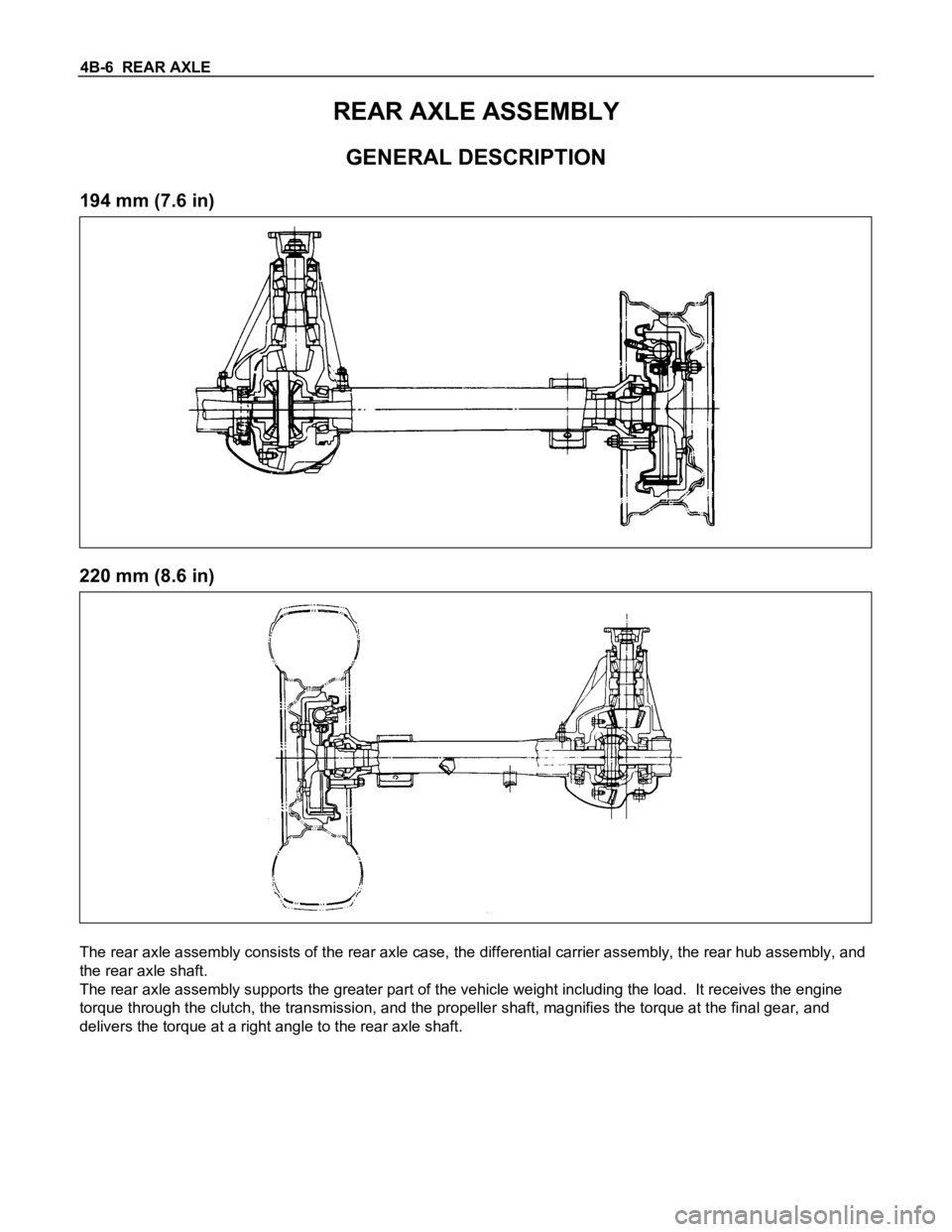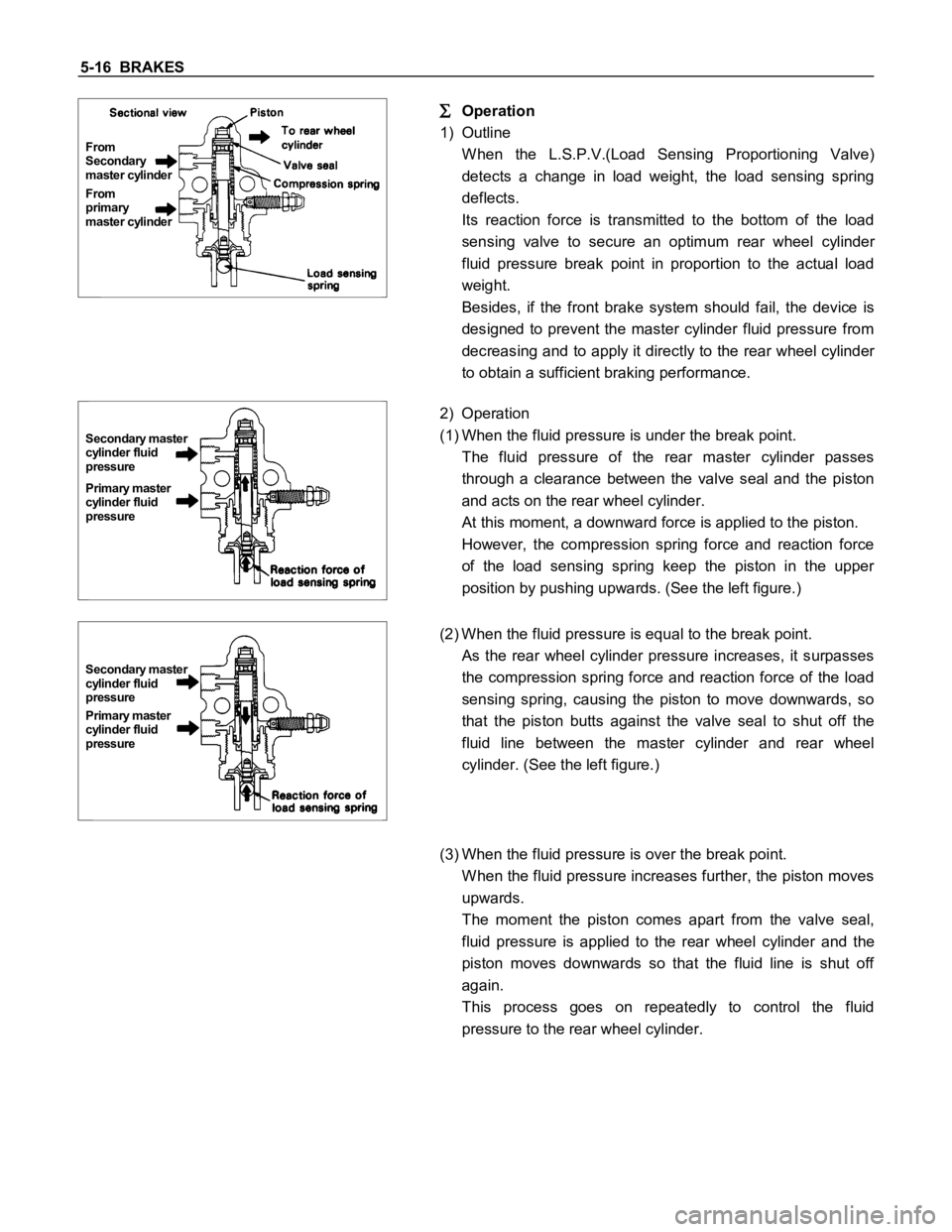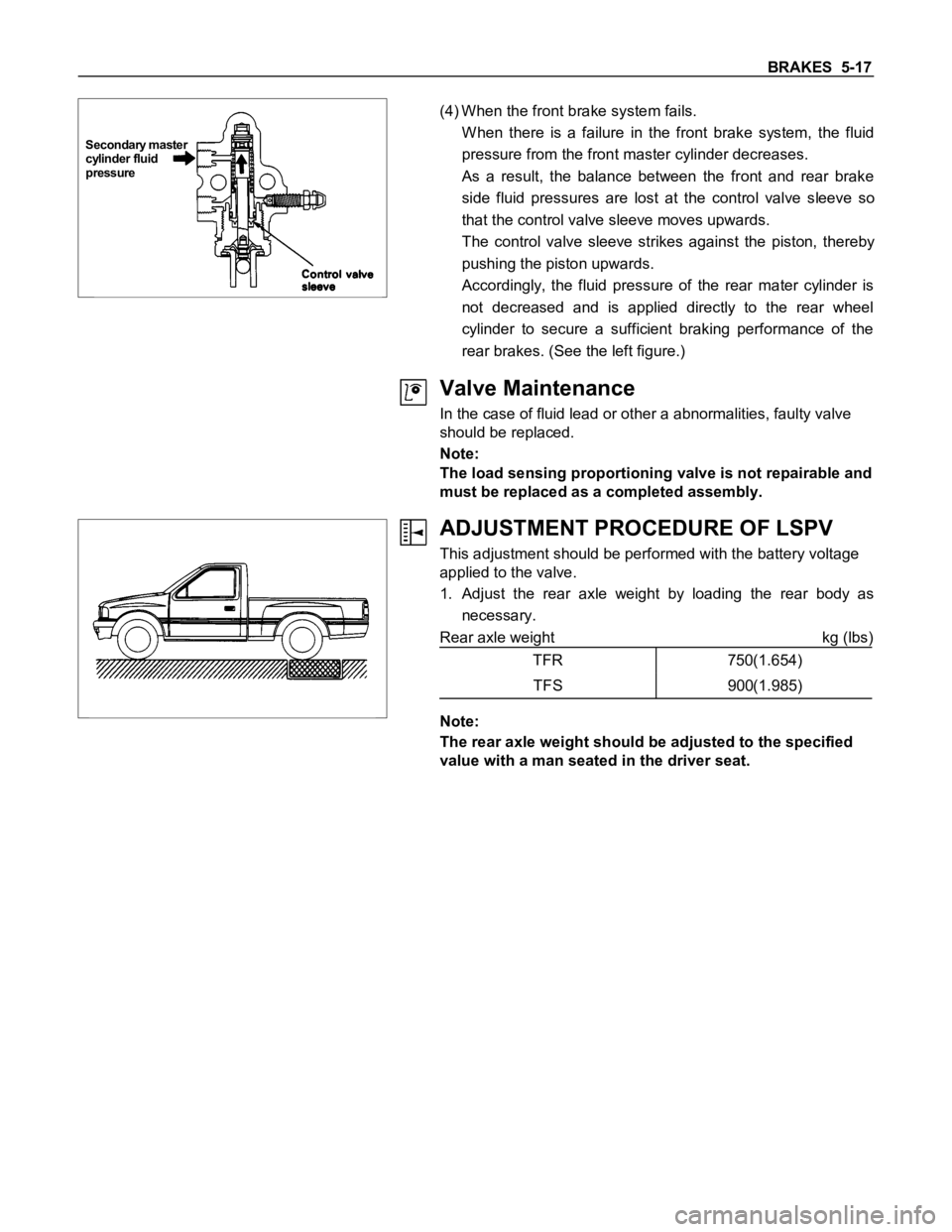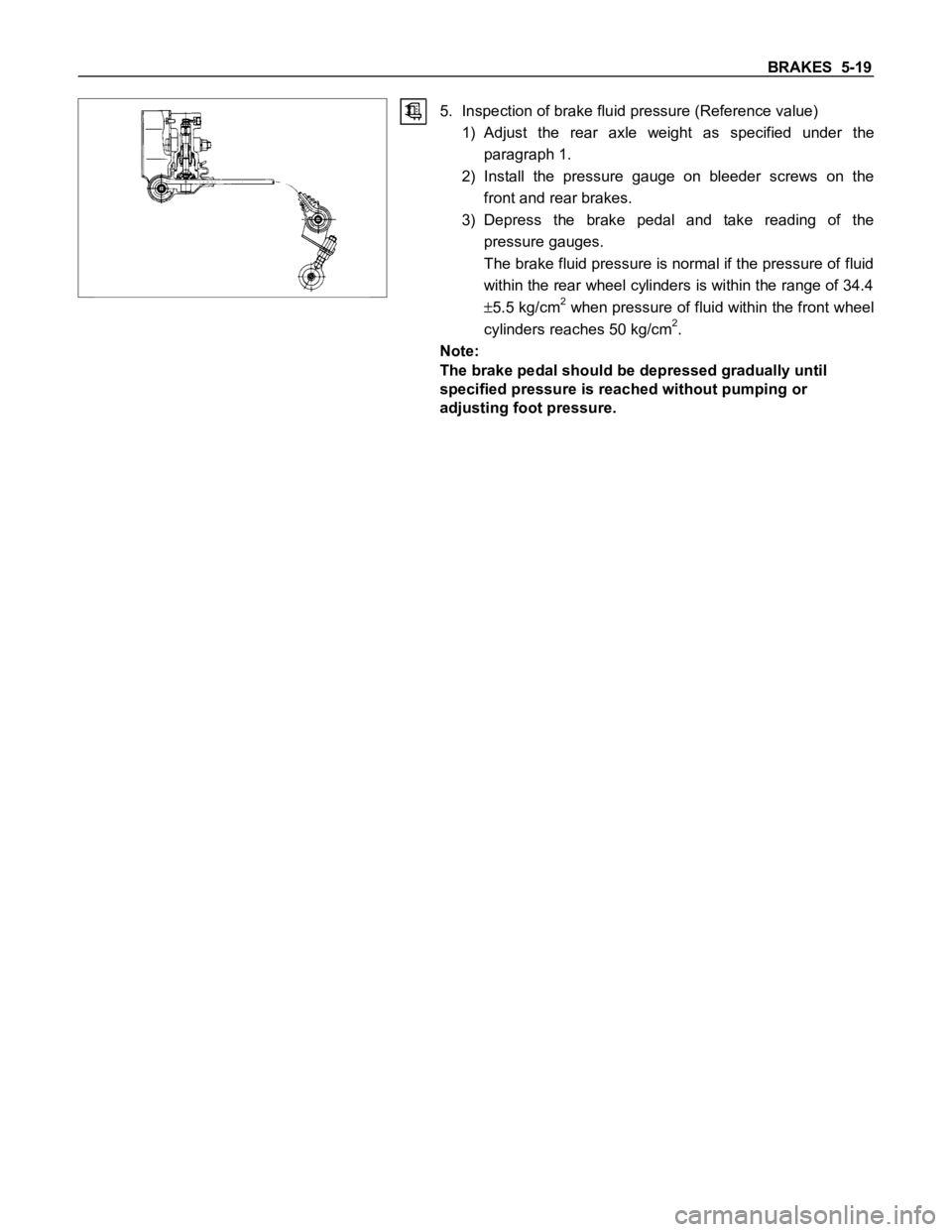weight ISUZU TFS SERIES 1997 Workshop Manual
[x] Cancel search | Manufacturer: ISUZU, Model Year: 1997, Model line: TFS SERIES, Model: ISUZU TFS SERIES 1997Pages: 1600, PDF Size: 40.98 MB
Page 2 of 1600

4B-6 REAR AXLE
REAR AXLE ASSEMBLY
GENERAL DESCRIPTION
194 mm (7.6 in)
220 mm (8.6 in)
The rear axle assembly consists of the rear axle case, the differential carrier assembly, the rear hub assembly, and
the rear axle shaft.
The rear axle assembly supports the greater part of the vehicle weight including the load. It receives the engine
torque through the clutch, the transmission, and the propeller shaft, magnifies the torque at the final gear, and
delivers the torque at a right angle to the rear axle shaft.
Page 344 of 1600

5-16 BRAKES
From
primary
master cylinder From
Secondary
master cylinder
Operation
1) Outline
W hen the L.S.P.V.(Load Sensing Proportioning Valve)
detects a change in load weight, the load sensing spring
deflects.
Its reaction force is transmitted to the bottom of the load
sensing valve to secure an optimum rear wheel cylinder
fluid pressure break point in proportion to the actual load
weight.
Besides, if the front brake system should fail, the device is
designed to prevent the master cylinder fluid pressure from
decreasing and to apply it directly to the rear wheel cylinder
to obtain a sufficient braking performance.
Primary master
cylinder fluid
pressure Secondary master
cylinder fluid
pressure
2) Operation
(1) When the fluid pressure is under the break point.
The fluid pressure of the rear master cylinder passes
through a clearance between the valve seal and the piston
and acts on the rear wheel cylinder.
At this moment, a downward force is applied to the piston.
However, the compression spring force and reaction force
of the load sensing spring keep the piston in the upper
position by pushing upwards. (See the left figure.)
Primary master
cylinder fluid
pressure Secondary master
cylinder fluid
pressure
(2) When the fluid pressure is equal to the break point.
As the rear wheel cylinder pressure increases, it surpasses
the compression spring force and reaction force of the load
sensing spring, causing the piston to move downwards, so
that the piston butts against the valve seal to shut off the
fluid line between the master cylinder and rear wheel
cylinder. (See the left figure.)
(3) When the fluid pressure is over the break point.
W hen the fluid pressure increases further, the piston moves
upwards.
The moment the piston comes apart from the valve seal,
fluid pressure is applied to the rear wheel cylinder and the
piston moves downwards so that the fluid line is shut off
again.
This process goes on repeatedly to control the fluid
pressure to the rear wheel cylinder.
Page 345 of 1600

BRAKES 5-17
Secondary master
cylinder fluid
pressure
(4) When the front brake system fails.
W hen there is a failure in the front brake system, the fluid
pressure from the front master cylinder decreases.
As a result, the balance between the front and rear brake
side fluid pressures are lost at the control valve sleeve so
that the control valve sleeve moves upwards.
The control valve sleeve strikes against the piston, thereby
pushing the piston upwards.
Accordingly, the fluid pressure of the rear mater cylinder is
not decreased and is applied directly to the rear wheel
cylinder to secure a sufficient braking performance of the
rear brakes. (See the left figure.)
Valve Maintenance
In the case of fluid lead or other a abnormalities, faulty valve
should be replaced.
Note:
The load sensing proportioning valve is not repairable and
must be replaced as a completed assembly.
ADJUSTMENT PROCEDURE OF LSPV
This adjustment should be performed with the battery voltage
applied to the valve.
1. Adjust the rear axle weight by loading the rear body as
necessary.
Rear axle weight kg (lbs)
TFR 750(1.654)
TFS 900(1.985)
Note:
The rear axle weight should be adjusted to the specified
value with a man seated in the driver seat.
Page 347 of 1600

BRAKES 5-19
5. Inspection of brake fluid pressure (Reference value)
1) Adjust the rear axle weight as specified under the
paragraph 1.
2) Install the pressure gauge on bleeder screws on the
front and rear brakes.
3) Depress the brake pedal and take reading of the
pressure gauges.
The brake fluid pressure is normal if the pressure of fluid
within the rear wheel cylinders is within the range of 34.4
5.5 kg/cm2 when pressure of fluid within the front wheel
cylinders reaches 50 kg/cm2.
Note:
The brake pedal should be depressed gradually until
specified pressure is reached without pumping or
adjusting foot pressure.